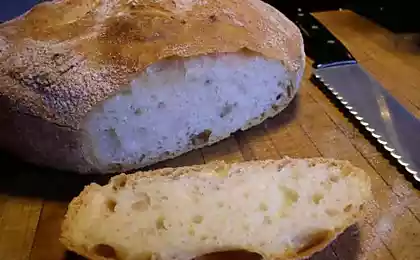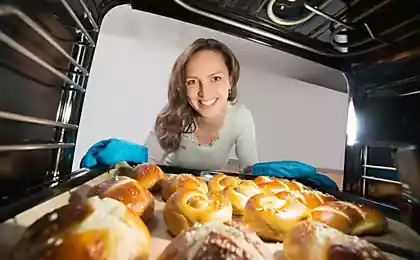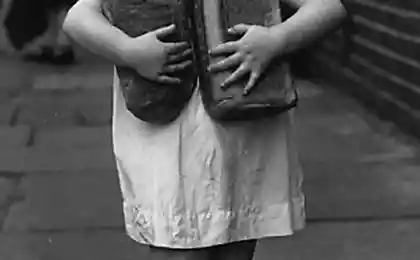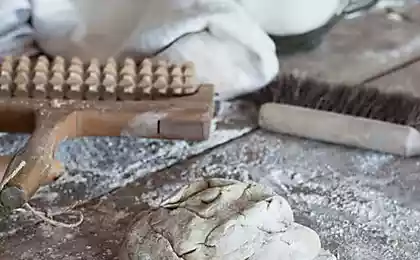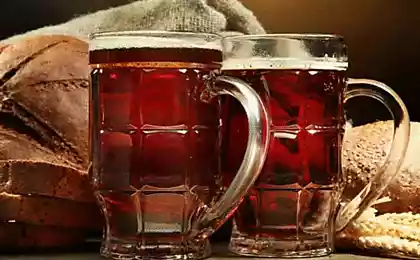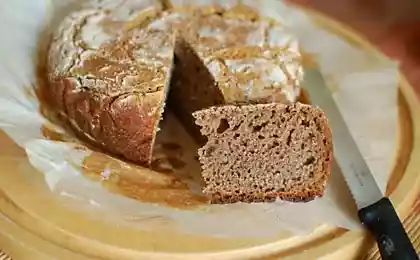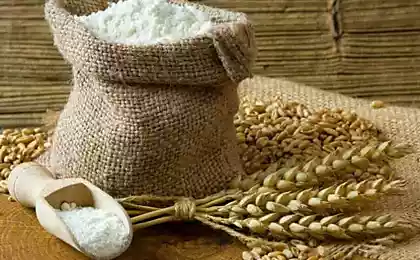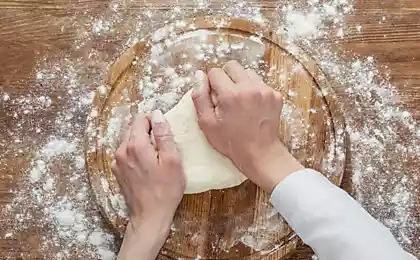364
Several recipes for home yeast and how to make them with your own hands
Not everyone had time to thoroughly stock up on buckwheat cereal and toilet paper, and yeast has already become a deficit, which is especially disappointing, because quarantine is the ideal time for experiments with baking. Is it possible to do natural yeast With your own hands? Sure! And "Site" He knows how.
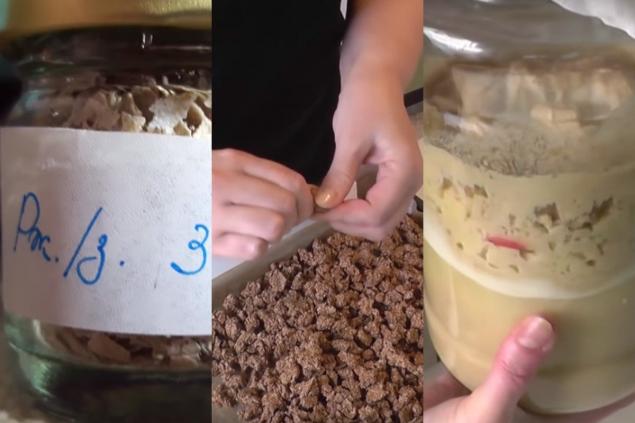
In home yeast there will be everything you need and at the same time nothing superfluous that will allow you to bake excellent bread, as our grandfathers once did: without industrial yeast, on natural starter from hops, rye flour, barley, wheat, bran or potatoes.
Today, there are several main types of baking yeast. First, yeast milk with a large number of grown yeast cells, which can be immediately used for kneading, but is inconvenient to store and transport.
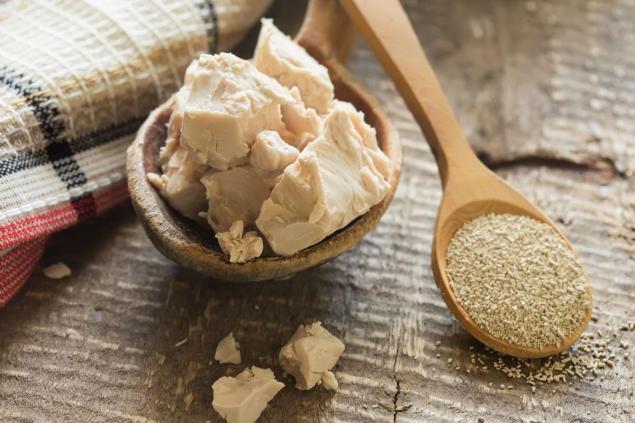
Secondly, pressed yeast in rectangular briquettes weighing 50, 100 and 1000 g (can be stored in the refrigerator for no more than two weeks). As well as dry yeast in granules, consisting of “sleeping” yeast cells, which must be dissolved in water to restore activity.
540369
Well, the last generation: fast-acting or instant yeast. Such yeast should not be diluted in water, but can be immediately added to the finished dough, mixing with a small amount of flour. In fast-acting yeast, there is a powerful potential for dough growth, it rises one and a half to two times faster.
Until the middle of the XIX century, yeast based on hops was used for baking bread. Anatoly Andreev’s book “Home Bread and Bake” gives their simplest recipe: “In the absence of ready-made yeast and starters, homemade ones are used.”
At home, you can prepare hop yeast if you boil hop flowers in water. In the resulting brown liquid after cooling add flour. Knead the cool dough. From it to make small, 60-70 g of cakes, which are well dried and sprinkled with flour. Yeast should be stored in a dry place.”
Curiously, dry-yeast appeared only in the 40s of the last century. Before that, they looked like dry lumps of bran with a thick malt aroma, and were, in fact, rubbed bran and dried leaven.
Yeast on bran
The ingredients
Preparation
Yeast on potatoes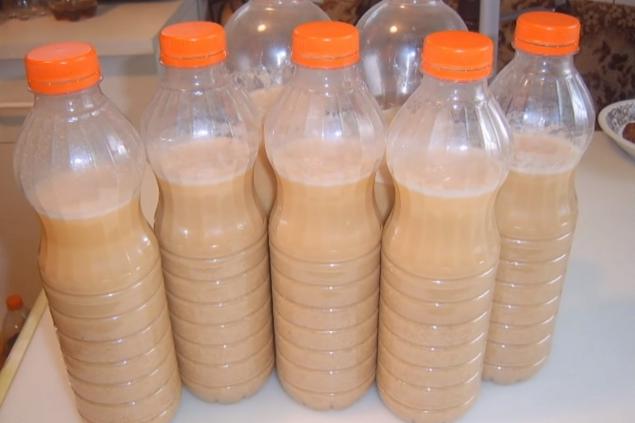
Sourdough ingredients
Yeast ingredients
Preparation
Eternal leaven on rye flour
The ingredients
Preparation
How to bake bread on home yeast from bran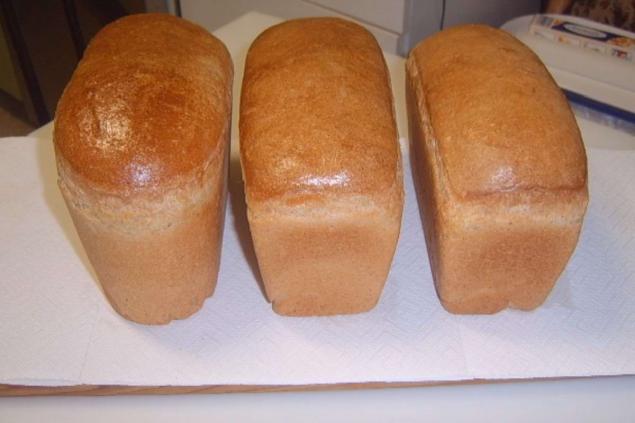
Sourdough ingredients
Test ingredients
Preparation
Preparing yeast with your own hands, you can get delicious and fragrant pastries at home. We wish that the dough always rises, delicious bread and a pleasant appetite!

In home yeast there will be everything you need and at the same time nothing superfluous that will allow you to bake excellent bread, as our grandfathers once did: without industrial yeast, on natural starter from hops, rye flour, barley, wheat, bran or potatoes.
Today, there are several main types of baking yeast. First, yeast milk with a large number of grown yeast cells, which can be immediately used for kneading, but is inconvenient to store and transport.

Secondly, pressed yeast in rectangular briquettes weighing 50, 100 and 1000 g (can be stored in the refrigerator for no more than two weeks). As well as dry yeast in granules, consisting of “sleeping” yeast cells, which must be dissolved in water to restore activity.
540369
Well, the last generation: fast-acting or instant yeast. Such yeast should not be diluted in water, but can be immediately added to the finished dough, mixing with a small amount of flour. In fast-acting yeast, there is a powerful potential for dough growth, it rises one and a half to two times faster.
Until the middle of the XIX century, yeast based on hops was used for baking bread. Anatoly Andreev’s book “Home Bread and Bake” gives their simplest recipe: “In the absence of ready-made yeast and starters, homemade ones are used.”
At home, you can prepare hop yeast if you boil hop flowers in water. In the resulting brown liquid after cooling add flour. Knead the cool dough. From it to make small, 60-70 g of cakes, which are well dried and sprinkled with flour. Yeast should be stored in a dry place.”
Curiously, dry-yeast appeared only in the 40s of the last century. Before that, they looked like dry lumps of bran with a thick malt aroma, and were, in fact, rubbed bran and dried leaven.
Yeast on bran

The ingredients
- 800g wheat bran
- 1 kg whole grain flour
- 200g hop dry cones
- 4 liters of hot water
Preparation
- Pour 1 part of hops with 2 parts of water. In our case, 2 liters (200 g) of dry cones of hops per 4 liters of water.
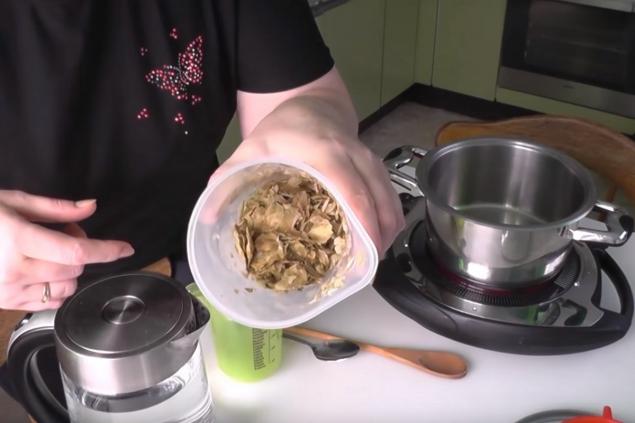
- Put the pot on the fire and boil until half the water has boiled.
- Then cool it so that it is easier to strain the broth and squeeze the cones. It should make 2 liters of decoction.
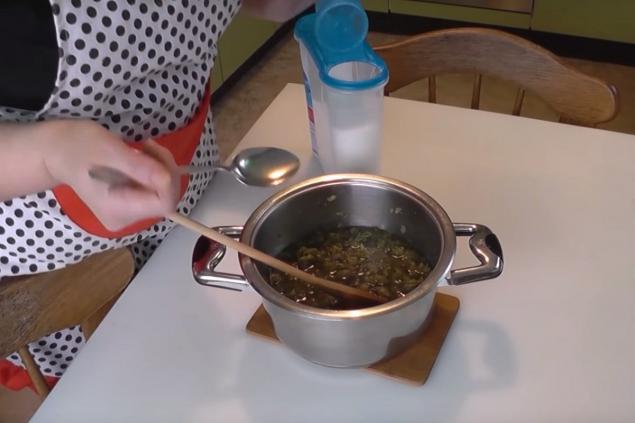
- Put half the cooled broth on the gas again.
- Add 500 grams of flour to the other half. Stir it so there are no lumps. The consistency is like the pancake test.
- Constantly stirring, pour the flour mixture into the boiling broth. When the first bubbles appear, remove the mixture with the consistency of sour cream from the fire. Leave for half an hour to cool down.
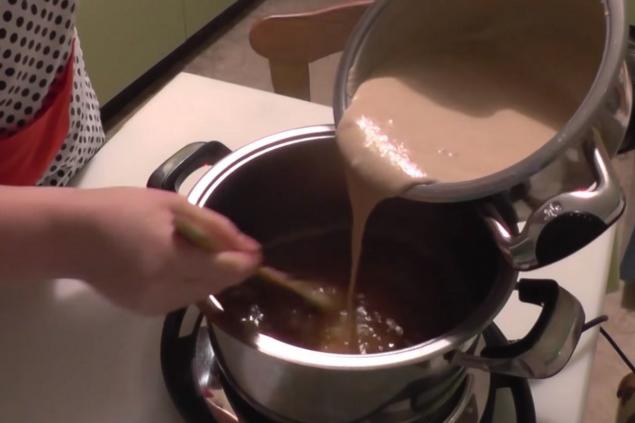
- Pour another glass of flour and stir. Leave it for 2 hours. Add another glass of flour, stir and leave for a day in a warm place (near the battery).
- After a day, add a glass of flour and two glasses of ground bran to the mixture. Stir and leave for 4 hours in a warm place, covering with a napkin.
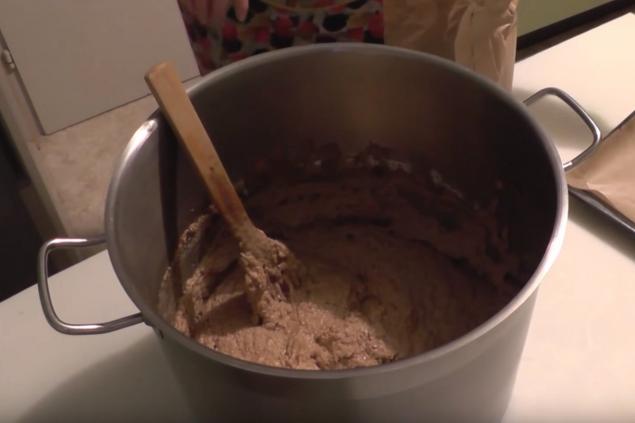
- Sprinkle the remaining bran and knead the thick dough. Bran should absorb all the moisture. Divide the dough into 4 parts for drying.
- Spotted 4 baking paper. Put the dough on them and divide it with your hands into small crumbs.
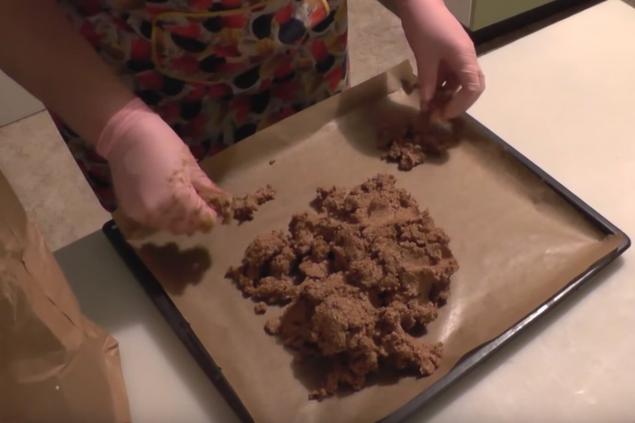
- You can dry in a warm place for 3 days or in a dryer, if it can set a temperature of 30 degrees.
- Determine the readiness of yeast by breaking the largest pieces. There should be no moisture inside.
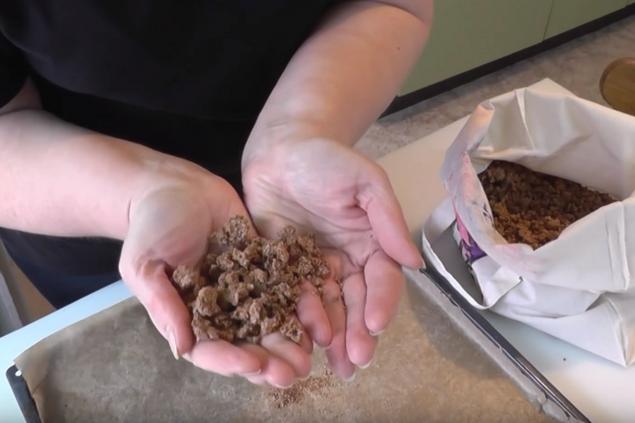
- Having made yeast with your own hands, store them in a glass jar with a lid or a bag of natural fabric. Duration of storage - up to a year.
Yeast on potatoes

Sourdough ingredients
- 20g dry hop cones (1 tbsp)
- 1.5 liters of water
- 4 tbsp sugar
- 3 potatoes
- 1 tbsp whole wheat flour
Yeast ingredients
- 50g dry hop cones (2.5 tbsp)
- 4 liters of water
- 2 kg potatoes
- 1 tbsp sugar
- 1 tbsp salt
Preparation
- Mix 20 g of hops and 1.5 liters of boiling water. Cook under the lid for 20 minutes, stirring constantly. It's about a liter of decoction.
- For each glass of liquid, add a spoonful of sugar. Stir and pour into a clean jar. Cover the gauze and leave for 2 days in a warm place for fermentation.
- Meanwhile, boil the potatoes until ready.
- Strain the fermented hops.
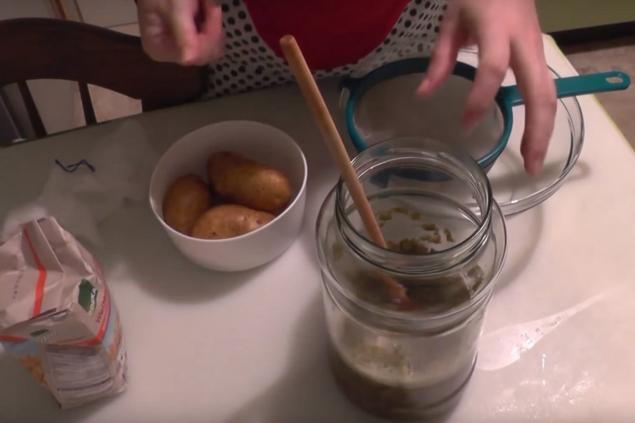
- Pass the strained broth to the jar.
- Cut the boiled potatoes to a state of puree, cool to room temperature.
- Add to the broth a glass of flour and potatoes. Stir, cover the gauze and leave the sourdough in a warm place for a day. For better fermentation, it must be stirred periodically.
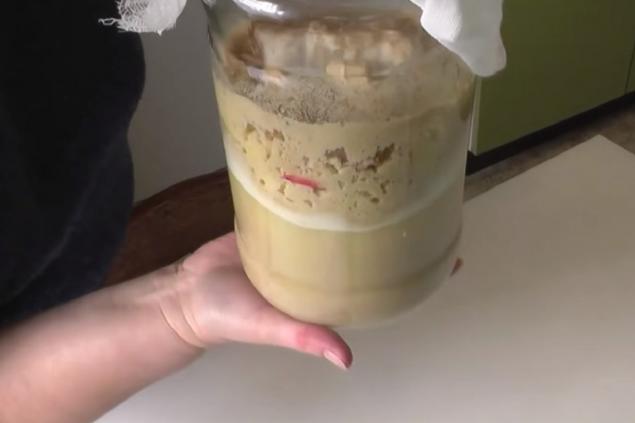
- Pour 2.5 glasses of hops with 4 liters of water and boiling to eventually get 3 liters of decoction.
- Sodium on a fine grater 2 kg of raw potatoes.
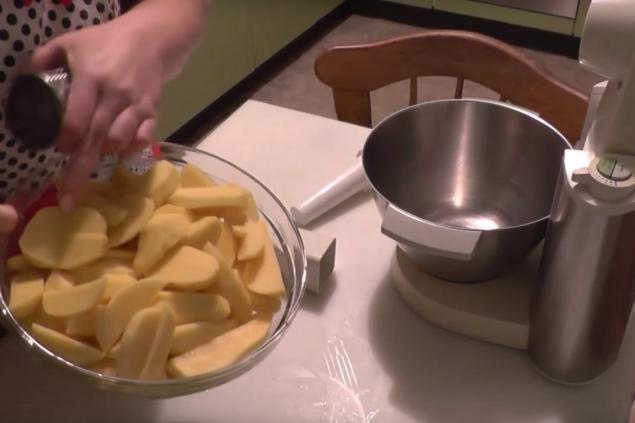
- Put a broth on the fire, add a glass of sugar and a tablespoon of salt to it, bring it to a boil.
- Pour grated potatoes in a bucket with a hot broth, stir, cover with a towel and put in a warm place.
- When the starter is ready (it should increase in volume by at least 2 times), fill it with potatoes with hops and mix.
- As soon as the yeast in the bucket stops fermenting, pour them into clean bottles.
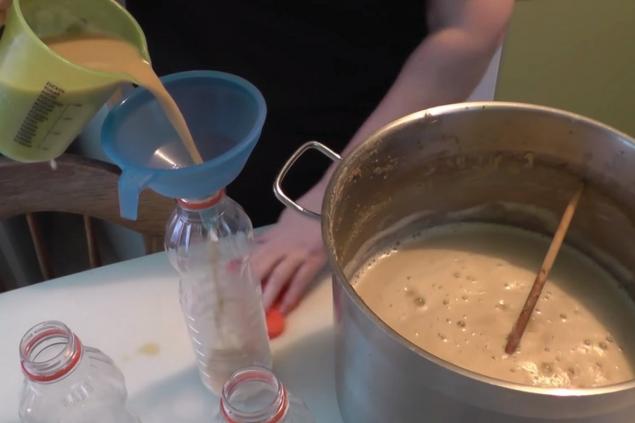
- Cooking yeast with your own hands, they can be stored in the refrigerator or in a cold place for up to 6 months.
Eternal leaven on rye flour

The ingredients
- rye-meal
- water
Preparation
- On the first day, mix in a jar 50 grams of warm water and 50 grams of whole grain rye flour. Stir and cover the jar with a hole lid. Leave it in the kitchen at room temperature.
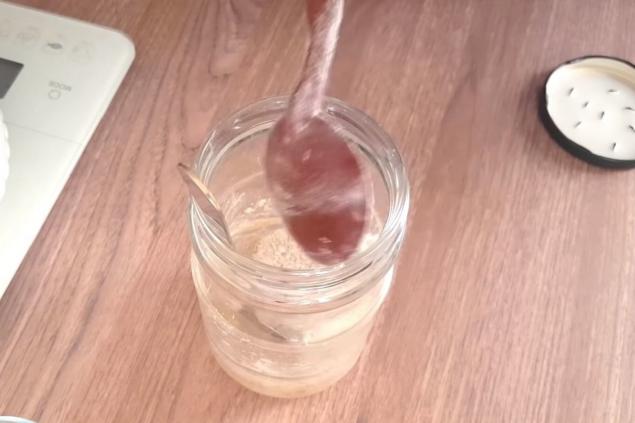
- On the second day, add 25 grams of water and 25 grams of flour, mix. If the sourdough during the day does not become porous, it means that your flour is not suitable for sourdough. Throw it away and repeat the procedure with new flour.
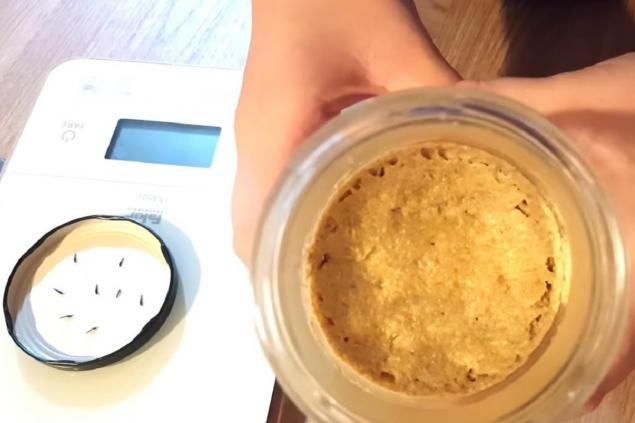
Sourdough from good flour should rise throughout the day. On the same day, it can reach a turning point. If the leaven rose in a day, and then fell, it is time to feed it.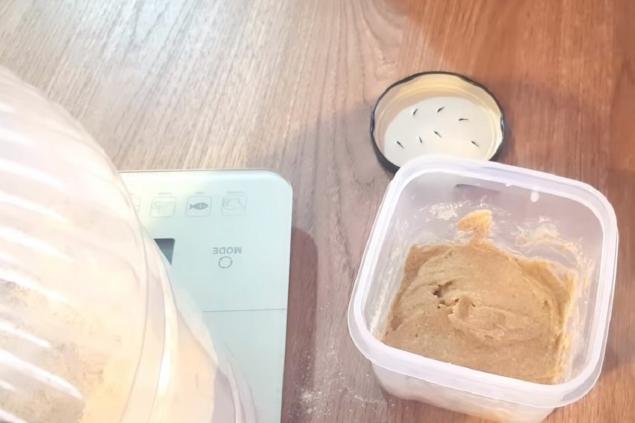
But this time, to increase the concentration of good bacteria, some of the sourdough needs to be removed. Leave only 75 grams of sourdough and add 25 grams of flour and 25 grams of water, stir. Throw away the rest of the leaven. Cover the lid and leave the sourdough in the kitchen. - The next morning, take only 50 grams from the original starter, throw the rest away. Add to 50 grams of leaven 25 grams of flour and 25 grams of water. Cover the foil with the holes.
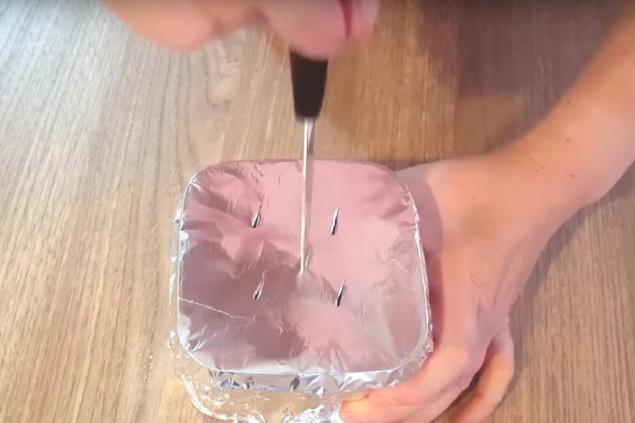
- On the fourth day, select 50 grams of leaven, add 25 grams of flour and 25 grams of water, mix thoroughly, cover with foil.
- On the fifth day, repeat the same procedure.
- If on the sixth day the sourdough rises twice and pleases you with a pleasant smell, then the second turning point has come: it is time to send the sourdough to the refrigerator.

Take 50 grams of leaven, add 25 grams of flour and 25 grams of water, mix thoroughly, cover and send to the refrigerator. - If after a night in the refrigerator starter rose well, you can go to feeding in a ratio of 1 to 2. Take 25 grams of leaven, add 50 grams of flour and 50 grams of water. Stir well, cover the lid, send to the refrigerator for 2 days.
- On the 9th day, the feeding is performed in a ratio of 1 to 4. To 30 grams of leaven you need to add 120 grams of water and 120 grams of flour. After two days, you will have enough leaven to support yourself and to baking bread every 3-4 days.
- It happens that there is no time to maintain the leaven, then the leaven can be dried. Smear 30 grams of sourdough with a thin layer over a sheet of parchment paper. Wait until it's completely dry.
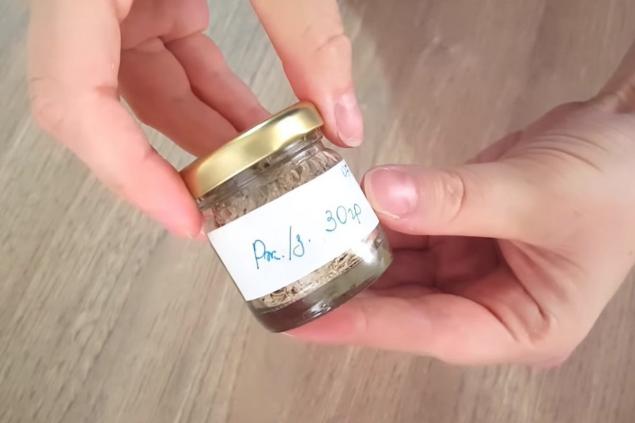
Rub it to a state of cereal and pour it into a jar with a tight lid. Such leaven can be stored without feeding for several years. If you need to use it, dilute water to an initial weight of 30 grams and several times feed in a ratio of 1 to 1.
How to bake bread on home yeast from bran

Sourdough ingredients
- 40g house yeast
- 250 ml of water
- 1 tbsp sugar
- 1 st of first-class flour
Test ingredients
- 600 ml of water
- 150g natural yogurt
- 1 tbsp honey
- 30g salt
- 1 kg of first-class flour (without 1 cup)
- 0.5 kg of premium flour
- 50ml vegetable oil
- 1 egg yolk
Preparation
- Pour 40 grams of house yeast from bran with a glass of water. Wait for it to dissolve completely.
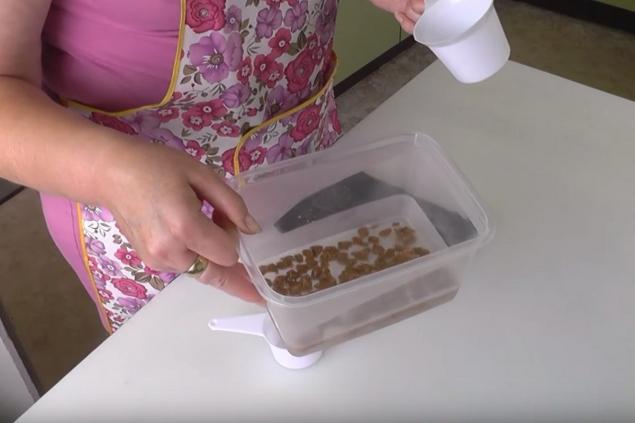
- Add a tablespoon of sugar to the yeast.
- Divide the glass of flour into 4 pieces.
- Add to the mixture every 3 hours a tablespoon with a slide of flour, stir.
- After 12 hours, the finished starter can be used to mix the dough.
- Mix the yogurt with water. It should be 750 ml of liquid. Add the honey here and stir it.
- Add 30 grams of salt to the flour.
- Mix some of the flour, yogurt with water, sourdough and vegetable oil in a combine bowl.
- Sprinkle a little flour to knead the dough.
- Leave the dough for 15 minutes.
- In the meantime, prepare 3 baking forms.
- Once again, divide the dough into 3 equal parts.

- Place them in shapes so that they occupy less than half the volume.
- Cover the forms with a towel dough and leave for 2 hours.
- After two hours, send the raised bread for 1 hour to the oven, heated to 180 degrees.
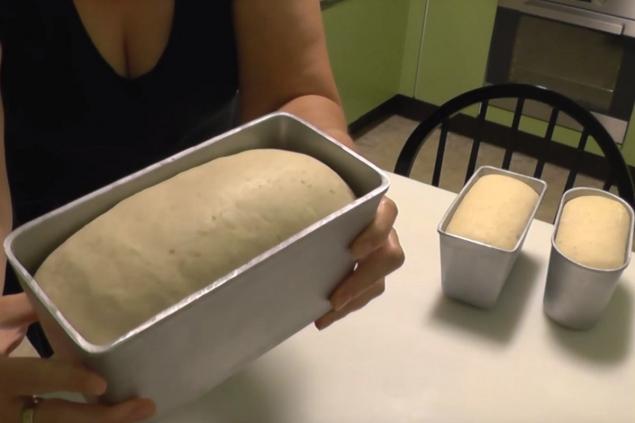
- 10 minutes before preparation, lubricate the top with a mixture of water and yolk.
- Cut bread on leaven is recommended after complete cooling.
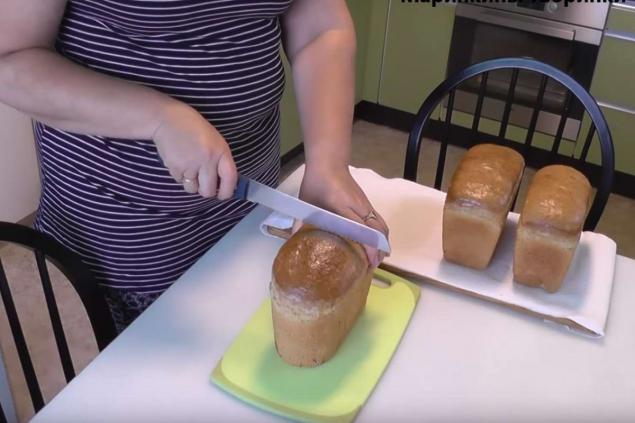
- The bread turned out to be rosy, soft, porous, with a crispy crust.
Preparing yeast with your own hands, you can get delicious and fragrant pastries at home. We wish that the dough always rises, delicious bread and a pleasant appetite!
How to disinfect the bath and make the sink shine
Technology of cooking meatballs in a pan and what kind of gravy fits them




















